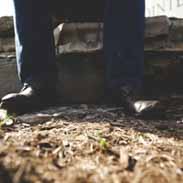Buddha and Ashoka: Crash Course World History #6 – Flashcards
Unlock all answers in this set
Unlock answersquestion
The Vedas
answer
Earliest of the Religious texts left behind by the Aryans. The Vedas is what will come to be known as Hinduism
question
The Caste System
answer
One of India's most enduring and fascinating institutions, separated classes (Brahmins, Kshatriyas, Vaisyas, and Sudras) of India using the God Purusha. Foundation of Dharma, samsara, moksha, and Karma
question
Brahmin
answer
Purusha's mouth, spoke to the gods (top of caste system)
question
Kshatriyas
answer
Purusha's two arms, the warriors
question
Vaisyas
answer
Purusha's two thighs, the merchants and artisans who provided money for the priests and warriors
question
Sudras
answer
Purusha's two feet, the laborers and farmers who are the foundation of social order
question
Dharma
answer
One's role in life and society and is defined primarily by birth and caste
question
Samsara
answer
Cycle of rebirth, also called reincarnation. Based on your fulfillings of dharma, you reborn into a higher being (class)
question
Reincarnation
answer
After death, a person's soul is transferred to another living thing as it is being born
question
Moksha
answer
Release from the cycle of rebirth impelled by the law of karma.
question
Karma
answer
Your actions reflect your future. If you do good then good will happent to you, if you do bad then bad will happen to you
question
Buddhism
answer
6th century BCE. Began with Siddhartha Gautama (brahmin who has been locked in his home for his whole life). He goes outside for the first time and encountered an old man, a sick man, and a corpse. Having realized the definition of suffering, siddhartha left his home in search for enlightenment (Nirvana) and became known as Buddha. Taught the four noble truths
question
The Four Noble Truths
answer
1. All life is suffering 2. The source of suffering is desire 3. To stop suffering, you must rid yourself of desire 4. Following the eightfold path
question
Eightfold Path
answer
A set of eight prescriptions on how to live. 1. Right View 2. Right intention 3. Right speech 4. Right action 5. Right livelihood 6. Right effort 7. Right mindfulness 8. Right concentration
question
Buddhism's appeal
answer
Attractive to low-caste Hindus because there is no caste system. Anyone who follows the eight fold path and renounces desire can be freed from suffering and achieve Nirvana
question
Ashoka
answer
Leader of the Mauryan Dynasty. Initially a warrior who ended up exapnding the empire that his grandfather (Gupta) started. Converted to Buddhism after his army slaughtered the Kingdom of Kalinga. Built stupas and pillar that proclaimed bins benevolent rule
question
Stupas
answer
Mound-like monuments to the Buddha built by Ashoka, all over his kingdom to show his devotion
question
Buddha's teachings migrated to where
answer
East to China



